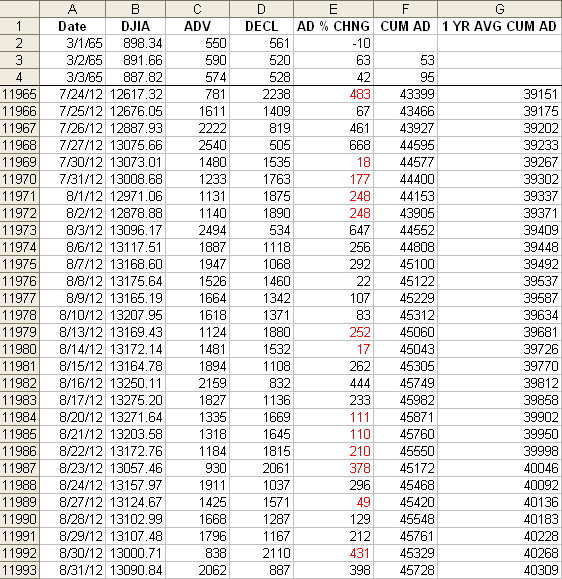TRADING SYSTEMS
Low-Tech, Low-Stress
Here’s one way you can combat the high-frequency traders. The best part is, you can sleep well at night, using the one-year moving average of the cumulative advance-decline data.
Is Wall Street turning your 401k into a 201k? Maybe you don’t have a bank of supercomputers in your garage cranking out high-speed trading algorithms. Maybe you don’t golf with a member of the Federal Banking Committee who can offer “insights” into upcoming market-moving decisions. Or maybe your neighbor isn’t a ranking member of the US Treasury Department with wealth-creating tips. If you’re an individual retail trader who doesn’t have access to the information that moves the markets, then you may be a candidate for low-frequency trading.
LOW-FREQUENCY TRADING?
You’ve heard of high-frequency trading. Low-frequency trading is the alternative to the gut-wrenching, career-ending, thrombosis-inducing 200 trades a millisecond technology called high-frequency trading. Low-frequency trading lets you sleep at night and spend time with your family, friends, and real-life interests. With this method, you only need to update your data and check your signals a few times a year (or as often as you like). All you will need is a pencil and paper, a newspaper, or a personal computer with a spreadsheet program. The data you need can be found in the daily business section of most newspapers or available online.

FIGURE 1: CREATING THE INDICATOR. Your spreadsheet should be similar to what you see here. There are seven columns of data: date, DJIA close, NYSE daily advancing issues, NYSE daily declining issues, daily adv-dec percentage change, cumulative advance-decline line, and the one-year moving average of the cumulative advance-decline line.